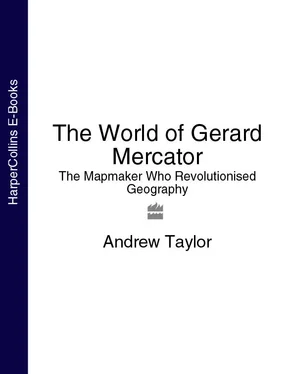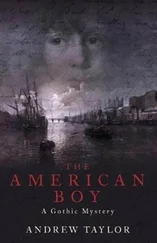While the actual extent of the world would have astonished the ancients, its round shape had been known since well before Ptolemy’s time. Various early Greek philosophers had produced detailed arguments to prove that the Earth was cylindrical, disk-shaped, or rectangular, that it was cushioned in compressed air, or that it was floating on water. Yet by 250 BC, Eratosthenes of Cyrene, one of the scholars who devised a rudimentary grid of latitude and longitude, had not only accepted the idea of a spherical world but had studied the stars to calculate its circumference. 1
Strabo, another Greek geographer and historian, who worked before Ptolemy in the library of Alexandria in the last century BC, had a severely practical turn of mind. The world could be represented on a globe, he declared, but the globe would have to be ten feet across to show all the necessary detail. The work of Ptolemy himself a century or so later in devising projections shows that he had no doubts either about the curvature of the Earth. For accuracy, he concluded, there was no substitute for a globe.
Ptolemy had described in great detail how it should be done, with the globe suspended between two poles connected by a semicircle, which should almost touch its surface. Such an arrangement, he wrote, had advantages and disadvantages when compared to his own efforts at working out a way of projecting a map onto a flat surface: “It preserves the world’s shape, and avoids the need for any adjustment of it, but it hardly provides the size needed for containing most of the things that must be marked on it, nor can it allow the entire map to be shown from one vantage point.” 2
Like his books, Ptolemy’s endorsement of the globe was lost to Europeans in the Middle Ages. There are tantalizing mentions in classical literature of various globes, including small representations of the Earth enclosed within glass spheres which showed the constellations, like the pair Charles V, the Holy Roman Emperor, would later demand from Mercator. But if the Greeks or Romans ever made large detailed models of the spherical Earth, in line with the recommendations of Ptolemy and Strabo, none of them survived. European craftsmen produced armillary spheres in which concentric metal rings would demonstrate the supposed motion of the planets around the Earth, but they showed no interest in the idea of a terrestrial globe.
The Arabs, on the other hand, turned Ptolemy’s words into reality. Many of them used his Almagest rather than the Geographia and showed the stars, not the Earth, in their work. In Florence’s Museum of the History of Science, there is an engraved metal sphere about eight inches in diameter, with 1,015 stars marked on it according to Ptolemy’s descriptions, made by Ibrahim ibn Said al-Sahli al Wazzan with his son Muhammed in Valencia, in Moorish Spain, in the late eleventh century.
Such magnificent celestial globes were often carved on brass or silver, intended for a study rather than the navigator’s desk, but the Arabs must have made terrestrial globes as well. None survives today, but Christopher Columbus said in his ship’s log that he had seen globes of the world on which the island of Cipangu, or Japan, was marked.
The Arab globes were also studied by Martin Behaim, a Nuremberg traveler and adventurer who set out to copy the technique and manufacture a globe of his own toward the end of the fifteenth century. Behaim claimed to have sailed the coasts of Africa with the Portuguese explorers, and to have seen the globes at the Royal Observatory, which had been established in about 1420 by Portugal’s Prince Henry the Navigator at the southern port of Sagres. 3
One advantage that neither Strabo, Ptolemy, nor their Arab imitators had mentioned was that the globe offers a dramatic way of demonstrating the circularity of the Earth to a layman – an investor, for instance, who might be persuaded to put money into an expedition. The Portuguese had demonstrated that there were riches to be won in the East, and in order to show the wealthy financiers of Germany how easily the Indies could be reached by sailing west, Behaim constructed the first modern globe known to have been produced in Europe. It was intended not for scholars or sailors but for bankers.
Behaim, the son of a German nobleman, had been packed off to Portugal as a young man to gain experience as a businessman, but had spent more time there among the sailors and navigators around the docks than in import and export. He had a healthy disrespect for authority – in his youth, he was said to have served a month in prison for dancing at a Jew’s wedding during Lent – but he also had a shrewd commercial eye. He was fascinated not only by what he had seen of the voyages of discovery but also by Prince Henry’s Arab globes.
None of those globes is known to have survived, but the Arabs had proved that Ptolemy’s theory worked. A globe to show how the western ocean lay between the continents of Europe and Asia was clearly the way to impress a skeptical audience with the practicality of sailing west to reach the Spice Islands in the East. The Portuguese controlled the passage around the southern coast of Africa, and huge costs were involved in the ancient overland trails from Asia through Arabia to the Mediterranean. The globe – which Behaim called his erdapfel, his earth-apple – was a striking demonstration of another route.
Today, Behaim’s brainchild is the most famous exhibit in Nuremberg’s Germanisches Nationalmuseum, 4darkened by age and scarred by the attentions of well-meaning “restorers” in the nineteenth century – the oldest terrestrial globe in the world. It was a scientific wonder, an artistic triumph representing the best thinking of Behaim’s age about the shape of the world – and a commercial dead end. Unlike the globe manufacturers who followed him in the sixteenth century, Behaim could not profit from selling examples of his creation; his globe was, unavoidably, unique. He lived before the development of printing techniques enabled artisans and mapmakers to create limitless copies of their work, and his map had to be painted by hand onto sheets of thin, fine leather after they had been stuck to a twenty-inch papier-mâché shell and mounted on an elegant wooden stand. It was never designed for navigation. Apart from the equator, a single meridian, and the Tropics of Cancer and Capricorn, there were no longitudes and latitudes marked on it, although Behaim did include the constellations of the zodiac and an array of forty-eight flags of European nations and noble families, fifteen coats of arms, and forty-eight portraits of kings and rulers. The globe was a tool of commerce, and to catch the interest of the Nuremberg merchants, Behaim incorporated lengthy descriptions of what merchandise could be purchased in the various islands of the Far East, and how trade should be conducted. For the artist Behaim paid to paint his globe, it was a miniature masterpiece. But however much the burghers of the town admired the piece, it could never be reproduced, except by starting from scratch with a new map.
BEHAIM’S TIMING, though, was unfortunate from an even more important point of view. As he was completing his model of the world, the world itself was changing beyond recognition. In Spain, the armies of Ferdinand and Isabella finally drove the Moors out of Grenada, breaking their last fingerhold in Europe and ending an Islamic presence that had lasted nearly eight centuries and enriched the country with art, literature, science, and trade. The king and queen had united the great kingdoms of Aragon and Castile with their marriage in 1469, starting an era of increasing royal prestige and power, and the departure twenty-three years later of Muhammad XI, or Boabdil, the last Moorish ruler on Spanish soil, reflected a new confidence for Christendom and the end of any lingering Arab dreams of further European conquest.
Читать дальше












